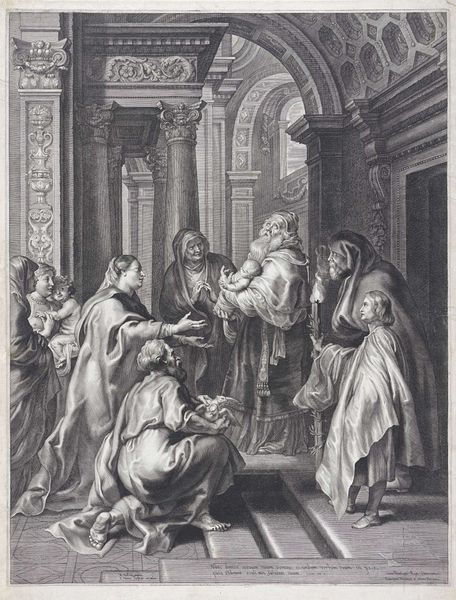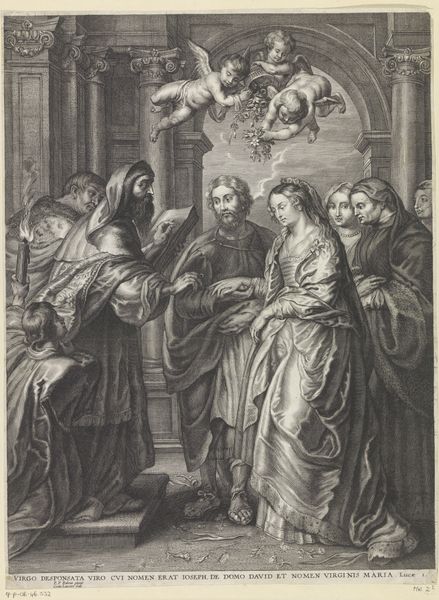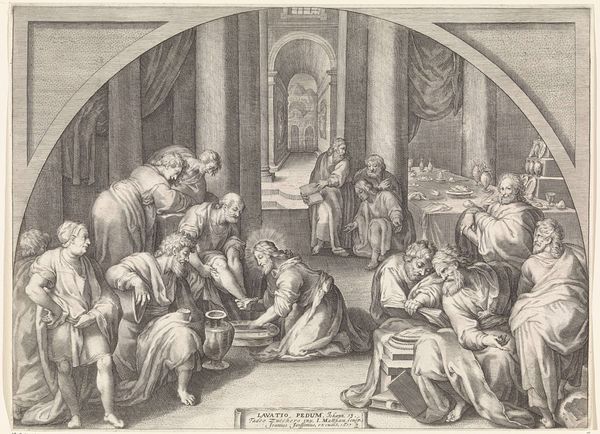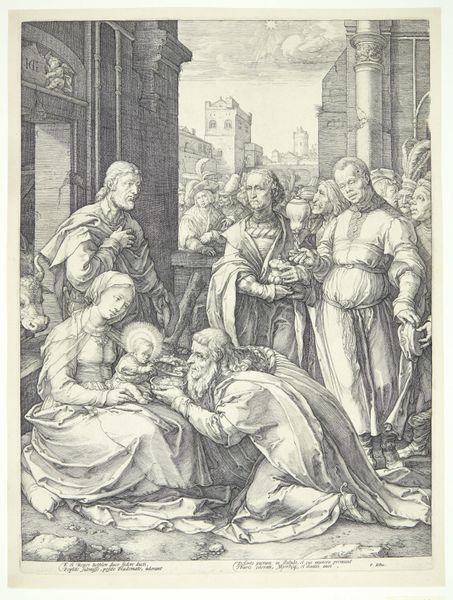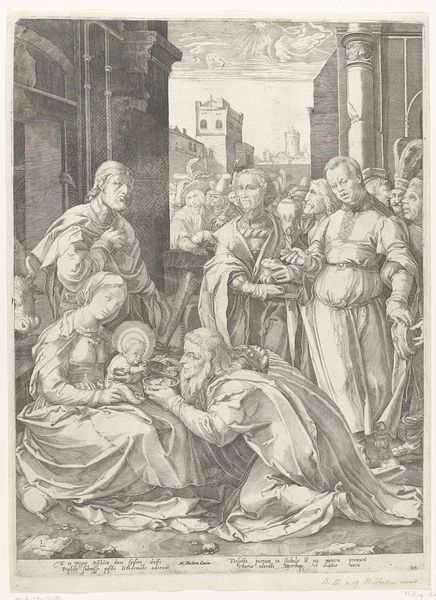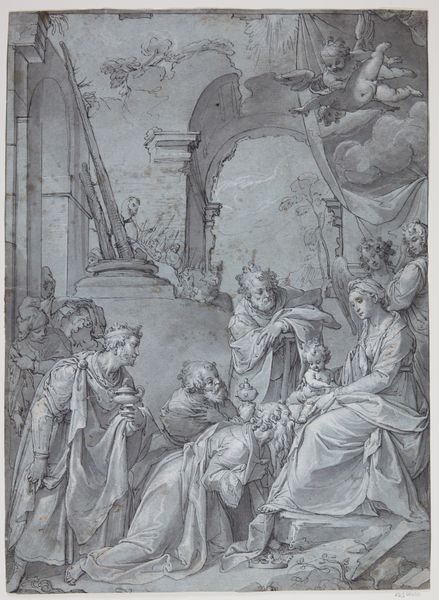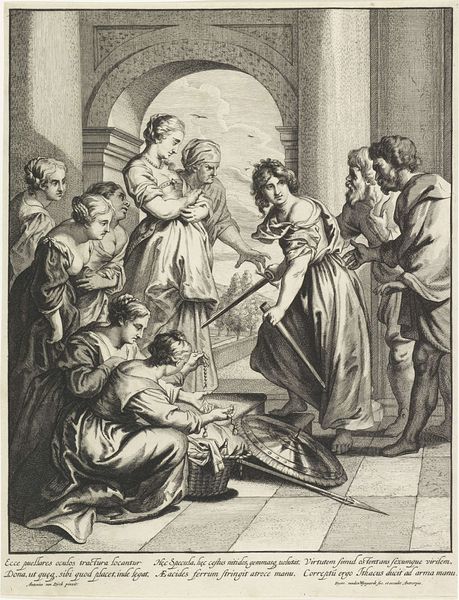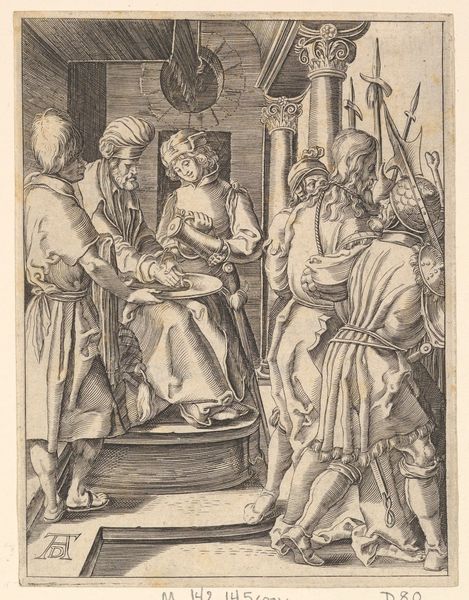
print, intaglio, engraving
#
narrative-art
#
baroque
# print
#
intaglio
#
history-painting
#
engraving
Dimensions: height 643 mm, width 490 mm
Copyright: Rijks Museum: Open Domain
Curator: Oh, this print just radiates history. Here we have "Presentation in the Temple," an engraving crafted in 1638 by Paulus Pontius, currently residing here at the Rijksmuseum. What catches your eye about it? Editor: It has such an organized, classical composition and this very contained kind of emotion; I feel that if there was more contrast between light and dark here, that drama could have maybe come through a bit more potently. Curator: Pontius, engraving from a painting by Rubens, excelled at capturing the master’s dramatic flair. See how he orchestrates the scene? The architecture is grand, supporting characters frame the key moment. It’s almost like staging for maximum impact. Editor: Absolutely. And that careful organization reflects Baroque principles; yet that regular light flattens the depth which I would suggest is contradictory. The architectural space seems more compressed because of the relative homogeneity in texture, too. What are we to read in that? Curator: Hmmm. To me, that even light draws all eyes to baby Jesus, highlighting him, literally bringing him "to light". Think of what this tiny baby symbolizes—hope, a new covenant. It speaks to both an ending and a new beginning, and Pontius wanted that plain as day for everyone, I suspect. Editor: Fascinating. Thinking structurally, it feels the composition, with the arching architecture mirroring figures, is designed to keep our focus from wandering out of the piece's conceptual "circle". But if the light feels too even and renders figures more one-dimensional rather than realistically dimensional, maybe what we're to realize is we are encountering a surface rather than being allowed a kind of naturalistic pictorial illusion. Curator: I like the thought of surface; engraving’s always like, "Hey, I'm a surface, too!" Makes me think about the act of witnessing, how Pontius's work creates an emotional record. After all, as a print, the image of Christ in the Temple, multiplied through generations, each becomes a singular artifact of a singular faith...it’s a rather moving thought! Editor: Indeed. Thanks, that's shifted my perspective on this piece considerably!
Comments
No comments
Be the first to comment and join the conversation on the ultimate creative platform.
